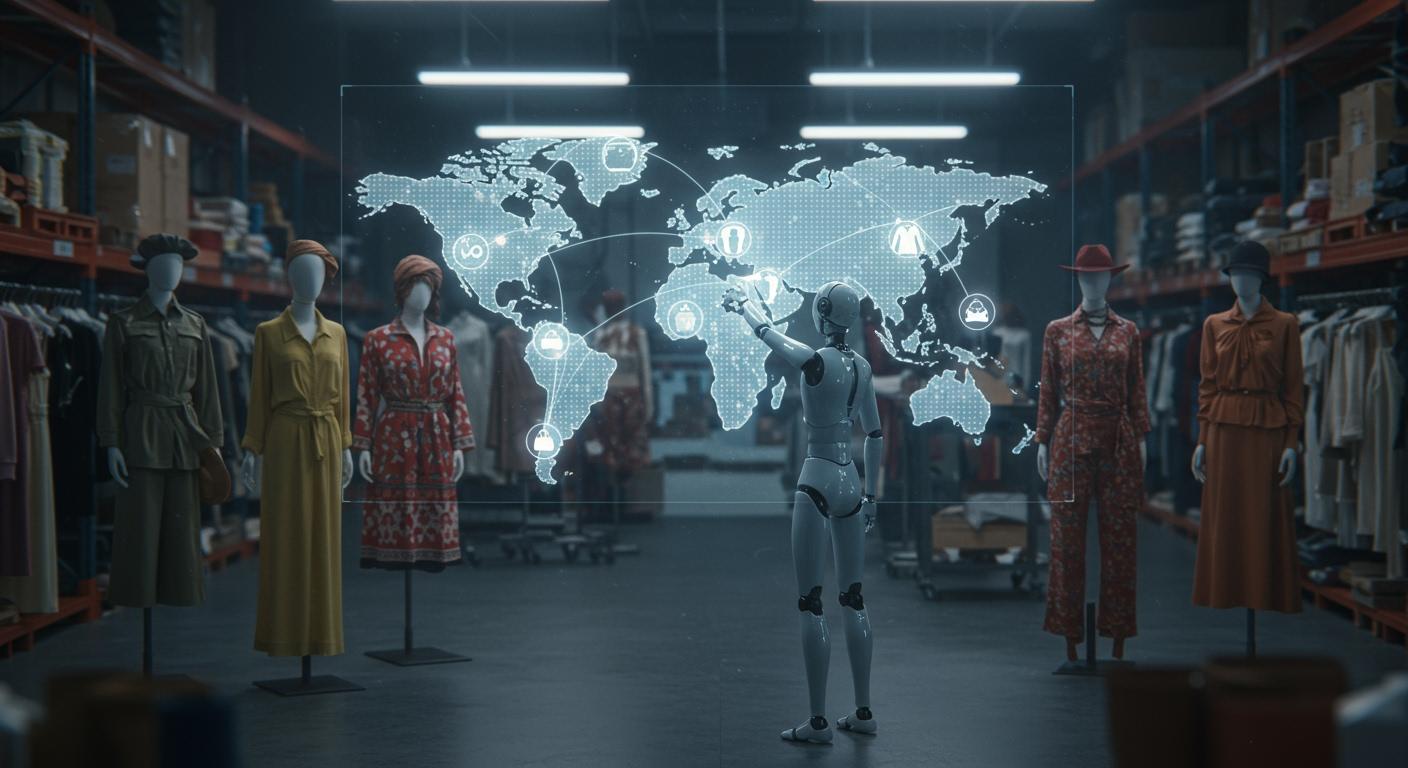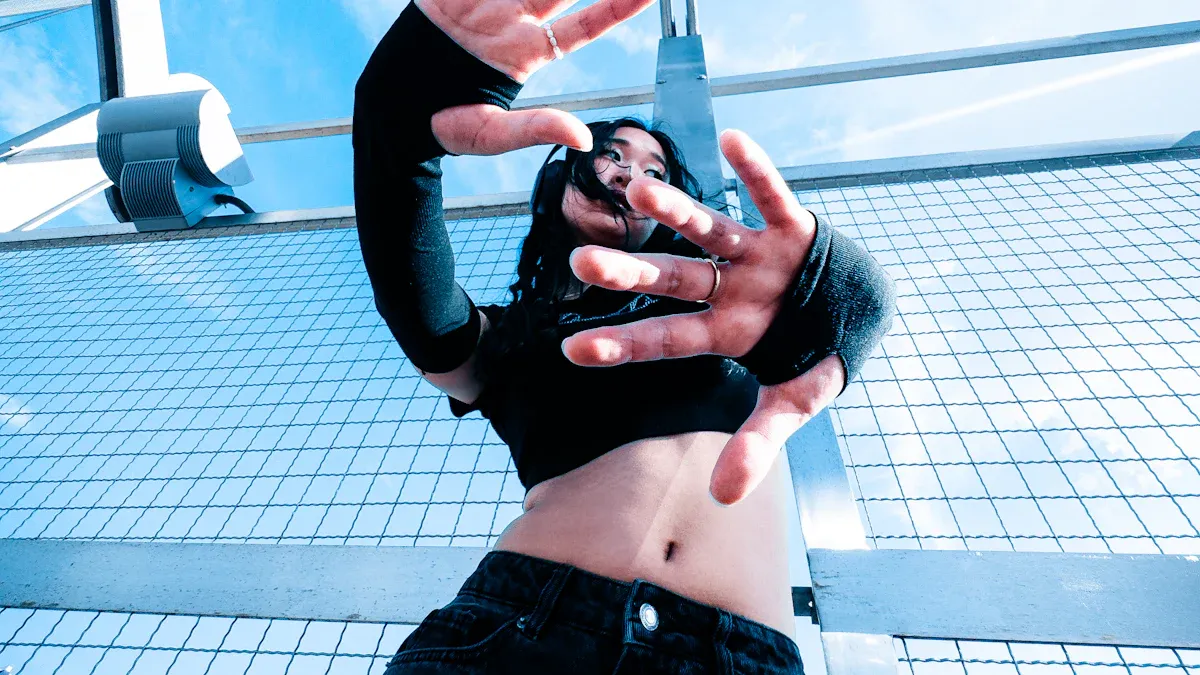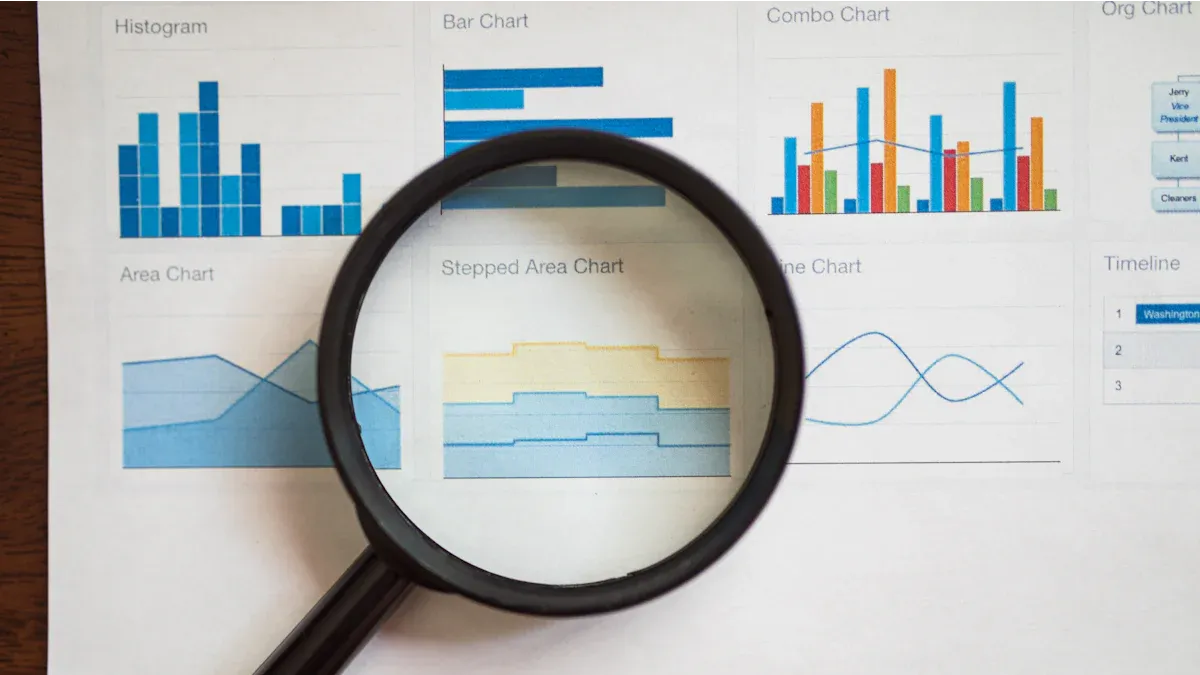
Machine learning revolutionizes how the fashion industry predicts regional fashion demand. AI models analyze vast sets of data to identify emerging trends. This data includes social media activity, e-commerce behavior, and even weather patterns. Data-driven forecasting improves accuracy by over 20% compared to older methods, moving the industry from guesswork to precision. This shift is critical for the fashion world.
Poor demand forecasting costs the fashion industry between $70 billion and $140 billion in lost sales annually. AI-driven demand forecasting offers a solution, using rich data to align production with actual demand and spot new trends. This precise forecasting helps create a smarter fashion ecosystem.
Spotting Future Trends: The Data Engine

The core of modern fashion forecasting is its powerful data engine. This engine processes huge amounts of information from different sources. It allows brands to understand the global market and predict trends with high accuracy. This data-driven approach is essential for the modern fashion industry.
The Social Media Pulse
AI models scan social media platforms like TikTok, Instagram, and Pinterest. They look for emerging micro-trends before they become mainstream. This data analysis examines more than just hashtags. The models track:
- A post's image
- The number of likes and comments
- The speed at which a topic gains attention
This process helps brands understand consumer interest and identify the next big fashion trends. The data provides a direct look at what people want.
E-commerce Purchase Patterns
Online shopping behavior offers valuable data about consumer preferences. AI systems track how users interact with products on e-commerce sites. This data helps build a clear picture of market trends and demand. Companies analyze many data points to understand the market.
| Company | Predictive Data Points Used |
|---|---|
| Sephora | Clickstream activity, purchase history, seasonal influence |
| Namshi | Past behavior, likes, return history, social trend tracking |
These analytics help the fashion industry understand what drives purchases.
Analyzing Visual Trends
AI uses image recognition to scan visual data from runway photos and social media. This technology automatically identifies key clothing attributes. It helps predict trends by spotting patterns in visual information.
AI can define specific clothing attributes from an image. It identifies the garment type, fabric, colors, and patterns. For example, it can spot an A-line silhouette or a geometric pattern.
This capability allows fashion brands to quantify which styles are gaining popularity. This is a key part of forecasting fashion trends.
Climate and Cultural Context
Effective forecasting considers more than just fashion data. AI models integrate weather data to predict demand for specific items, like coats or swimwear. The models also analyze local events. Cultural festivals or holidays create unique market trends for ethnic or celebratory fashion. This detailed data helps brands tailor their inventory to specific regional preferences and market conditions.
Applied Machine Learning: The Forecasting Models
Raw data becomes powerful through machine learning models. These models are the engines that turn information into actionable predictions. For fashion, specific algorithms analyze different types of data to create a complete picture of market demand. This process is essential for accurate forecast generation. The right models make fashion forecasting a science.
Time-Series for Demand Forecasting
Time-series forecasting uses historical data to predict future outcomes. This method is perfect for fashion demand forecasting. It analyzes sales data over time to spot patterns and trends. AI models look at past sales to understand seasonal demand. This data helps predict how much of a product will sell in the future. Several machine learning architectures are popular for this task.
- Neural Networks (NN) and Recurrent Neural Networks (RNN) are highly effective for complex forecasting.
- Support Vector Machines (SVM) also help identify patterns in sales data.
- Convolutional Neural Networks (CNN) extract features from product images to improve predictions.
Different models handle fashion's unique challenges in different ways. Sudden trends and seasonal changes require adaptive forecasting.
| Feature / Model | ARIMA | LSTM |
|---|---|---|
| Seasonality Handling | ARIMA models need a specific seasonal period to be defined. They work well with predictable cycles. | LSTMs learn complex seasonal patterns directly from the data. They do not need explicit instructions. |
| Sudden Trend Shifts | ARIMA models struggle with sudden shifts in trends. An abrupt change can lead to poor forecasts. | LSTMs are better at adapting to sudden changes. Their memory cells learn new patterns from the data quickly. |
This advanced analytics capability allows fashion brands to prepare for shifts in demand with greater accuracy.
Clustering for Regional Personas
Clustering algorithms group similar customers together. This creates "regional personas" that represent key market segments. AI uses data to build these groups. This data analysis helps brands understand who their customers are in different parts of the world. Key attributes for clustering include:
- Shopping behavior and purchase frequency
- Customer spending habits
- Categorical features like location or age
Brands use these personas to tailor their fashion offerings. For example, streetwear is very popular in the U.S. market. The same styles may not sell well in more conservative regions. Luxury fashion performs strongly in Europe and Asia but might be a niche product elsewhere.
Understanding these regional differences is vital. It allows companies to adapt their product range to match local fashion trends and cultural values. This targeted approach improves sales and strengthens brand connection with local customers.
NLP for Sentiment Analysis
Natural Language Processing (NLP) helps machines understand human language. In fashion, NLP analyzes customer reviews and social media comments. This process reveals how people feel about specific styles, products, or trends. The analytics provide deep insights into consumer sentiment. NLP algorithms perform several key tasks:
- Sentiment Classification: It sorts text into positive, negative, or neutral categories.
- Opinion Mining: It finds specific thoughts within reviews for more detailed data.
- Aspect-Based Sentiment Analysis: It connects sentiment to specific product features like fit, material, comfort, or price.
This detailed feedback is extremely valuable. For instance, a fashion retailer used NLP to track social media sentiment. The data showed a growing demand for vintage-style prints. The company launched a new collection based on this insight. The collection was a huge success because it met a specific, data-verified consumer demand. This shows how NLP turns text data into profitable business decisions and helps identify emerging fashion trends.
The Business Impact of AI Forecasting

Accurate forecasting transforms the fashion business. It moves companies from reacting to trends to predicting them. This shift creates powerful financial and operational advantages. AI models provide the insights needed to make smarter decisions across the entire business, from design to delivery. The impact is clear, measurable, and game-changing for the modern fashion industry.
Optimizing Inventory and Reducing Waste
Effective forecasting directly tackles one of fashion's biggest problems: waste. Brands that use AI for demand forecasting can reduce unsold inventory by up to 30%. This improvement has a massive impact on both profits and the planet. Better predictions mean companies produce only what the market wants.
Levi's provides a strong example. The company implemented an AI solution for its demand forecasting. This system analyzed past sales, social media trends, and even weather patterns. The result was a significant drop in inventory holding costs and markdowns. This approach to apparel inventory planning helps brands manage inventory more efficiently. Other major brands like Nike also use AI to predict demand and reduce excess stock.
AI-driven platforms help brands align production with real-time consumer interest.
- Heuritech assists luxury labels like Dior in spotting early trend signals, which reduces overproduction.
- T-Fashion and Stylumia help fast-fashion retailers stay ahead of trends without building up too much inventory.
This precise method of apparel inventory planning ensures that stock levels match actual demand. It minimizes the financial losses from overproduction and supports a more sustainable fashion ecosystem. Smart forecasting is key to a healthier bottom line.
Boosting Regional Fashion Demand
AI forecasting allows brands to connect with customers on a local level. It provides the data needed to tailor products and marketing for specific regions. This creates a more personal and relevant shopping experience. Companies can use these insights to boost regional fashion demand and build stronger brand loyalty.
Stitch Fix is a master of this approach. The company uses machine learning to offer personalized styling recommendations. Its AI engines analyze millions of data points to curate clothing selections for each consumer. Zara also uses AI to monitor store-level data and social media to decide what to produce and where to ship it. This gives the company micro-level intelligence for each market.
| Brand | AI-Driven Regional Strategy | Outcome |
|---|---|---|
| H&M | Analyzed local purchase histories to create tailored product assortments for individual stores. | Increased customer satisfaction and boosted sales with relevant inventory. |
| A Major Retailer | Used AI to identify the 'LumberJane' TikTok trend and automatically tag existing products. | Converted a viral trend into immediate sales by making relevant products easily searchable. |
These strategies show how data-driven insights help brands meet specific market needs. By understanding what a consumer in a particular region wants, a fashion brand can curate its online storefront and marketing campaigns to resonate deeply. This targeted approach turns forecasting into sales.
Creating an Agile Supply Chain
An agile supply chain connects forecasting directly to production and logistics. AI makes this connection seamless. When a forecast predicts a shift in demand, an agile system can react instantly. It adjusts manufacturing orders, reroutes shipments, and updates inventory levels automatically. This speed and flexibility are essential in the fast-paced fashion world.
Creating this system requires integrating several key technologies. These tools work together to turn predictions into physical actions.
- Core Systems: Enterprise Resource Planning (ERP) systems like Dynamics 365 manage procurement and distribution.
- Intelligence Engines: Azure Machine Learning builds the predictive models for forecasting.
- Automation Tools: Power Automate handles workflows, such as placing new orders when inventory runs low.
- Visibility Platforms: Power BI provides real-time dashboards to monitor logistics and performance.
This technological ecosystem allows a company to act on its forecasting immediately. High-quality data and skilled AI engineers are necessary to build and maintain these integrated systems. An agile supply chain, powered by smart apparel inventory planning, ensures that the right products are in the right place at the right time, minimizing delays and maximizing sales opportunities.
Challenges and the Future Outlook
AI forecasting offers incredible advantages, but it also presents significant challenges. The fashion industry must navigate issues of privacy, bias, and technological advancement. The future of fashion depends on using this powerful tool responsibly and effectively. This will shape a more intelligent and consumer-focused market.
Data Privacy and Model Bias
The use of consumer data is a major concern. Fashion companies must follow strict data protection rules like GDPR and CCPA. These regulations control how businesses collect and use personal information. Compliance is essential for building trust and operating legally. The data used for AI models must be handled with care.
Another challenge is model bias. AI systems learn from the data they are given. If the training data is not diverse, the AI can create unfair outcomes.
- AI might favor certain demographic groups if their data is overrepresented.
- It can create exclusionary recommendations that ignore the preferences of minority groups.
- Recommendation engines might show men more discounts if historical data reflects this pattern.
The World Economic Forum reports that over 45% of AI systems in retail risk unintended bias. This happens because of poor representation in training data. This highlights a critical area for improvement in the fashion market.
The Future: Real-Time Adaptation
The future of fashion forecasting lies in real-time adaptation. New technology allows AI to process live data streams from many sources. This gives brands an immediate view of changing market trends and dynamic consumer preferences. This capability is crucial for the fast-paced fashion industry.
AI tools analyze real-time data to spot emerging trends instantly. They track social media hashtags, engagement metrics, and e-commerce activity. This constant monitoring helps brands react quickly to new fashion trends. Advanced algorithms can identify complex patterns in sales data, leading to more accurate forecasting. This technology helps brands understand the drivers behind demand. This real-time analysis turns the market into a live feedback loop for fashion companies.
Towards Hyper-Personalization
AI is pushing fashion towards hyper-personalization. This approach tailors the shopping experience to each individual consumer. AI analyzes a person's shopping behavior, style preferences, and even body measurements. This data helps create unique product recommendations and customized clothing.
This technology is changing how people shop. Virtual try-on tools use augmented reality to show how clothes will fit. This reduces returns and improves the online experience. Brands like Stitch Fix use AI to curate personal style boxes. Other companies allow customers to design their own items using AI. This level of personalization helps brands connect with consumers and meet their specific preferences. It moves the fashion industry away from mass production and toward a more individual-focused market. This creates new opportunities to engage with emerging trends.
Machine learning gives the fashion industry a powerful tool. It uses data to predict fashion demand, moving beyond guesswork. Brands analyze data to precisely meet diverse regional fashion demand and specific consumer demands. This data-driven approach to managing demand creates a more efficient and sustainable fashion ecosystem. The future of fashion depends on this intelligent use of data.
FAQ
How does AI predict fashion trends?
AI models analyze huge amounts of data from social media and online sales. They identify patterns in colors, styles, and silhouettes. This process helps them spot emerging trends before they become popular, giving brands a major advantage.
What data does AI use for fashion forecasting?
AI systems use diverse data to make accurate predictions. This information provides a complete view of consumer interests and market conditions. Key data sources include:
- Social media activity and engagement
- E-commerce purchase histories
- Visual data from runway photos
- Regional weather patterns
Can small fashion brands use this AI technology?
Yes, many AI forecasting tools are available as subscription services. This accessibility allows smaller brands to use powerful analytics without high initial costs. They can compete with larger companies by making data-driven decisions for their inventory and marketing.
What is the biggest benefit of using AI in fashion?
The biggest benefit is reducing waste. Accurate forecasting helps brands produce the right amount of clothing. This minimizes unsold inventory, which saves money and supports a more sustainable fashion industry by preventing overproduction.
See Also
Revolutionary AI in Fashion: Sustainable Solutions for a Greener Earth
AI's Role in Navigating and Adapting to Rapid Fashion Trends
Achieving Equilibrium: Predictive Analytics Optimizes Fashion Supply and Demand
Machine Learning Unlocks Future Fashion Trends, Driving Significant Sales Growth
Smart Shopping: AI Forecasting Enhances Your Upcoming Retail Experience